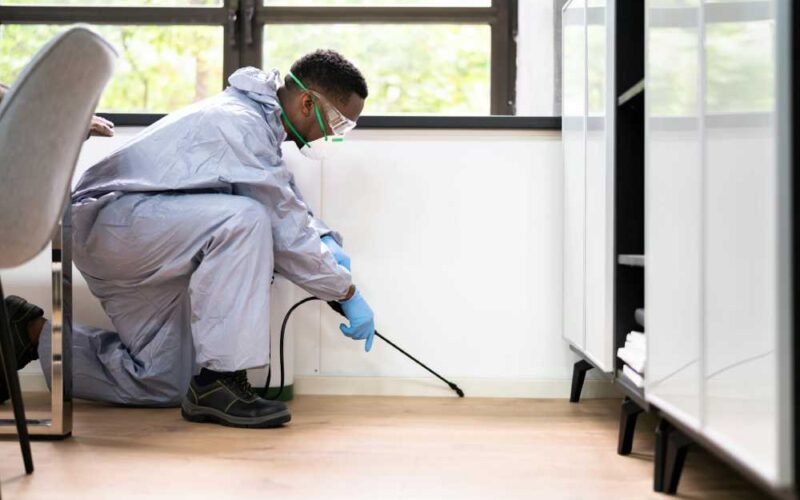Effective indoor pest control involves regular cleaning, sealing entry points, and eliminating food sources. Use traps and safe pesticides for targeted treatment, and maintain proper ventilation to deter pests. Regular inspections and prompt action can prevent infestations, ensuring a healthy, pest-free home environment.
Understanding the Importance of Indoor Pest Control
Indoor pest control is vital for maintaining a healthy and safe living environment. Pests not only harm property but also pose serious health risks. A comprehensive pest control strategy can prevent these issues and provide peace of mind. For instance, an exterminator can help manage infestations effectively, ensuring that your home remains a safe space for your family.
Pests such as rodents, insects, and even bats bring various challenges, from spreading diseases to causing structural damage. Understanding the importance of indoor pest control can help homeowners take proactive steps to handle these potential threats.
By mitigating these risks early on, homeowners protect their properties and safeguard their family’s health against the possible hazards that pests can introduce into an indoor environment.
Common Indoor Pests and Their Impact
- Rodents: Rats and mice are well-known for transmitting diseases via their feces and urine. Furthermore, they are skilled at chewing through electrical wires and wooden structures, resulting in expensive repairs. If not taken care of quickly, an infestation can spiral out of control due to their fast breeding cycles.
- Insects: Insects such as ants, cockroaches, and termites can contaminate food, spread allergens, and damage wooden structures. Termites, in particular, cause significant damage by eating away at the wood in homes. Because cockroaches can aggravate allergies and asthma, especially in young children, their presence poses a health risk.
- Bats: Though bats are beneficial for controlling insect populations outside and indoors, their droppings, which can carry harmful fungi, can create health hazards. Additionally, bats can introduce parasites like mites and fleas into your home, exacerbating the pest problem.
Effective Preventative Measures
Prevention is the first line of defense against indoor pests. Here are some practical measures:
- Seal Entry Points: To keep pests away, check your home for gaps or cracks in the doors, windows, and walls and seal them. This includes caulking for small gaps and weather stripping for doors and windows. Also, screens on windows and vents should be regularly checked and repaired to keep pests out.
- Maintain Cleanliness: Wipe off surfaces, mop the floor, and put food in sealed containers to keep your kitchen clean. Removing the trash and ensuring that pet food is stored correctly can also reduce the risk of attracting pests.
- Eliminate Moisture: Resolve any leaky pipes and utilize dehumidifiers in moist places to lower the moisture content, which can draw pests like silverfish and cockroaches. Ensure that gutters are clear and direct water away from your home’s foundation to avoid creating damp areas that pests might find inviting.
When to Call a Professional
Recognizing the need for professional assistance is essential. Signs indicating you require expert help include extensive infestations, persistent pest issues despite DIY efforts, and pests like rodents or cockroaches posing health risks.
A pest exterminator offers more effective, customized solutions with expertise, tools, and treatments to tackle severe infestations and prevent recurrence.
Professionals are also equipped to safely remove pests without putting your family or pets at risk. They can offer insights into why the infestation occurred and recommend structural or behavioral changes to prevent recurrence. Their services can include regular monitoring and maintenance plans to keep your home pest-free year-round.
Understanding the Environmental Impact
Concerns about pest control’s environmental impact are growing. Eco-friendly techniques and materials should be considered to manage pests efficiently with the least environmental harm. Options include using natural repellents like essential oils and diatomaceous earth, which are less harmful to the environment and non-target species.
The sustainable method of integrated Pest Management (IPM) reduces environmental, economic, and human health hazards by combining chemical, physical, and biological instruments.
By focusing on long-term prevention and using chemical treatments as a last resort, IPM can effectively manage pest populations while reducing the potential for pesticide resistance and environmental contamination.
Innovations in Pest Control Technology
The pest control industry continually evolves, with new technologies making pest management more effective and environmentally friendly. Some of these innovations include:
- Heat Treatments: Heat is used to exterminate pests, particularly bed bugs, and is resistant to chemical treatments. Heat treatments raise temperatures in infested areas to lethal levels for pests, eliminating them without harsh chemicals.
- Biological Pest Control: Introducing natural predators to control pest populations without harmful chemicals. For example, ladybugs can control aphid garden populations, while certain nematodes can target soil-dwelling pests.
- Clever Traps: These traps use sensors and wireless monitoring to provide real-time data on pest activity, allowing for more targeted and efficient control efforts. Clever traps can alert homeowners or pest control professionals to the presence of pests, enabling quick response and reducing the likelihood of widespread infestations.

